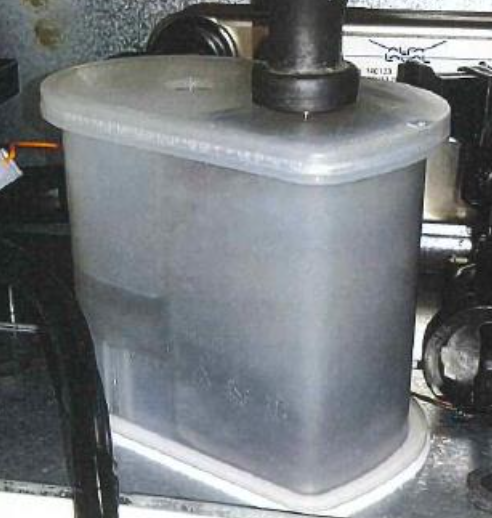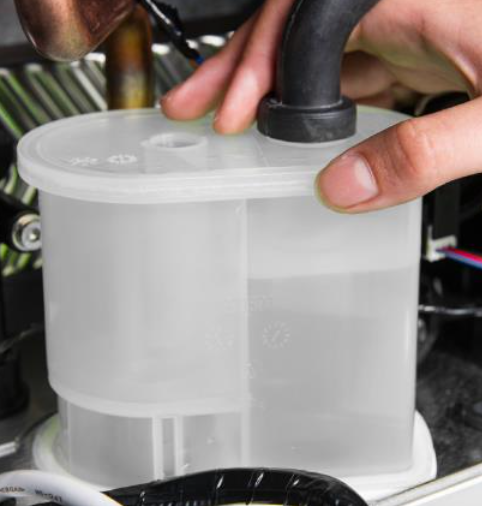Introduction
There are external factors to the GB24 and GB30 boiler which cause the L2 Fault Code to display and switch the boiler off. This article describes what the external factors are and how an end user can resolve them and restart the boiler.
1. Replacing gas cylinders
It is not uncommon for a boiler to stop working after replacing a gas cylinder due to a lack of gas if the reserve cylinder on an automatic change over system has shut off or a single cylinder installation has emptied. Ignite all four burner rings on the cooker in the kitchen, open a hot water tap and leave the rings on for a few minutes. With the hob rings and the hot water tap running, reset the boiler (please refer to the reset procedure on the final page of this article). This may take several attempts before the boiler re-sets. Please do not re-set the boiler more than 5 times in a 15 minute period as this will lock your boiler out and you will need to restart the process from the beginning.
The boiler should then restart and ignite. Through the process of igniting the burner rings, this should remove the air within the gas pipe and the boiler can return to working normally.
2. Gas stenching agent
LPG which is supplied to a home produces a recognisable smell if it leaks. LPG in its natural form does not smell. However to ensure a gas leak can be detected a ‘stenching agent’ is added. The stenching agent can oxidise (rust) inside. When the bottle is nearly empty the oxidised substance is pushed out and can block the pathway to the boiler causing it to lock out. This occurs more frequently when a system uses a single bottle at a time. To solve this problem, the gas pipes and regulator will need to be cleared before adding a new bottle and the boiler will need resetting.
The long term solution is to use an automatic ‘changeover valve’. This is a mechanism which allows two gas bottles to be joined together. When the first one is running low, the valve automatically changes and connects to the second bottle. The advantage to this is the changeover occurring before the first bottle is ‘nearly empty’ which is when the oxidised substance (if any) is pushed into the gas pipes and regulator. This then gives you an uninterrupted gas supply.
You are able to buy these from leisure distributors (Arleigh International for example) who will be able to advise on the correct type.
3. Blocked condensate trap
Both the GB24 and GB30 are condensing boilers. In common with all condensing boilers, whilst the boiler is in use a condensate liquid is produced that leaves the boiler via a syphonic condensate trap (as can be seen in the right hand picture below) and flows into the waste water drain under the holiday home. In certain circumstances the pathway leading to the condensate trap can become blocked as well as the condensate trap itself. An indication of this occurring is when a gurgling noise is produced from the boiler and the condensate trap becomes discoloured and black.
This extinguishes the burner in the boiler and displays a fault code of L2. If your condensate trap looks like the picture below to the left, not like the clean one to the right and / or is making a gurgling noise then there is a strong possibility that this is your problem.

|

|
|
Dirty / blocked condensate trap |
Clean condensate trap |
Causes of blockage and the process of combustion
|
Blockages occur because debris that the boiler breaths in via the flue and the condensate fluid by-product becomes stuck within the pathway leading to the condensate trap. This in turn also blocks the waste pipe and trap. Therefore, the boiler cannot remove the condensate liquid and fails to operate which shows fault code L2. The image to the right shows an example of liquid building up from the trap back into the boiler. This may occur more frequently to boilers that are exposed to slightly harsher environments such as salt, sand, dust and leaves from trees. |
|
Blocked condensate – What to do next?
This problem is not covered under our warranty as we are unable to control the cleanliness of air entering the boiler and the volume of condensate by-product being produced. Our manual advises that the boiler should be serviced at least annually. The frequency of servicing will depend upon the installation condition and usage. During a service the engineer, amongst other things, will remove the burner and clean the whole heat exchanger and condensate path with hot water. This returns the system to a clean state. This is the best guard against a blocked condensate system. It is important to use a Gas Safe Engineer to carry out the service.
Morco will happily provide contact details for your local Morco trained engineer – just call our offices on 01482 325456.
Reset/Re-start procedure
To reset boiler, turn the mode control knob (far left-hand side on the boiler) to the reset position and immediately turn knob back to required setting. The boiler will repeat the ignition sequence if a heat demand is present. For SIII & IV boilers, press the restart button on the front of the boiler. If the boiler still fails to light consult a Gas Safe Registered Engineer, or in other countries a qualified and competent Gas Installer.
Download a copy of this help article


